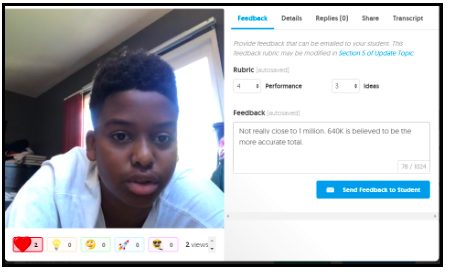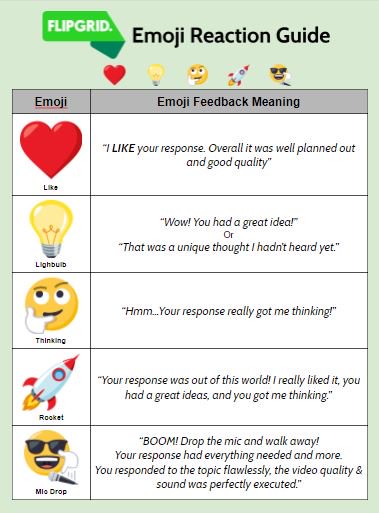I am a high school U.S. History teacher and since 2016 have been using Flipgrid — a video discussion platform designed to further K-12 student classroom conversation in a fun and interactive way. Here’s how it works.
Since first coming onto the educational scene in 2015, Flipgrid has exploded in popularity and for very good reason. In the high school U.S. History class alone, it’s an especially great teaching, learning and assessment tool. Better yet, it can be used in a variety of ways.
As a Fligrid Ambassador, I’ve seen it used mostly to assess students’ factual knowledge. (How did the Spanish colonies differ from the colonies of the French and the British?; What was the most important turning point in the Vietnam War?)
Fligrid also provides students with an opportunity to:
- Reveal where they stand on a modern day, all-important issue and at the same time hear where adults stand on the issue (as with this Flipgrid video: “Do you think that statues located in a public space and honoring leaders of the Confederacy should be permitted to remain as a historical symbol or should they be removed because they are offensive to some people?”
- Take on a persona of a historical figure no longer alive and then, on Flipgrid, offer up comments as if that figure were to come back to life today. (What would Theodore Roosevelt say about President Trump? What would Thomas Jefferson say about the state of our democracy? What would John Dewey say about Common Core?)
- Give three reasons why the U.S. was justified, or not justified, to engage in some action. (for example: the entry into the Cuban War of Independence; the annexation of Hawaii; the internment of the Japanese during World War II.)
- Create a diary entry recorded at the end of some all-important day in American history with each student in the class being called upon to take on a different role. (The Great Chicago Fire — a fireman, a student walking home from school and seeing the flames for the first time, a shop owner about to lose his business, etc.)
And, yes, of course Flipgrid is also used to assess students’ public speaking and listening skills.

 [/media-credit]
[/media-credit] [/media-credit]
[/media-credit]